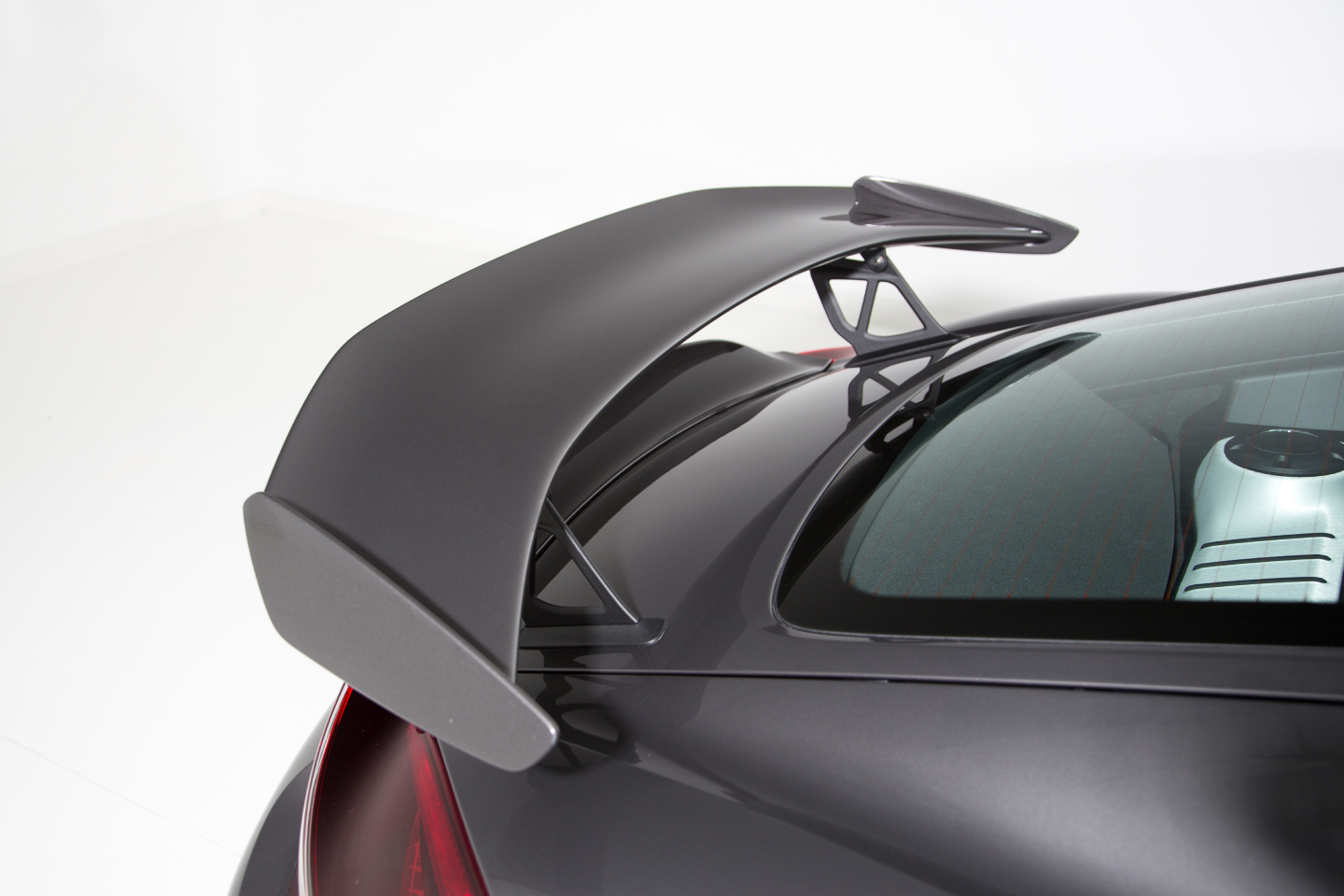

The task
German automotive supplier commissioned us to develop a rear wing for the performance version of a British roadster. This lightweight carbon version should still have sufficient strength with very high stiffness and very low weight. In addition, it had to fit perfectly into the aerodynamic concept of this sports car to ensure overall performance. The laminate layup as well as any internal elements were unknown at the start of the project and were to be determined by ar engineers.
The challenges and solutions in detail
- High quality requirements for the optimisation but also production planning of this component, as the dimensional accuracy must be very good for aerodynamic components that make a relevant contribution to the overall performance. This is the decisive prerequisite for achieving the high performance.
- The overall structure of the wing including the mount on the chassis must not exceed 4.5 kg.
- The wing should also achieve a high natural frequency (above 40 Hz) to prevent the structure from fluttering.
- This component should be designed as a hollow structure made of fibre composite laminate.
- The internal structure and the laminate layup for the wing had to be determined.
- In addition, it was necessary to withstand high acceleration in the event of a frontal crash.
- As already mentioned, the weight requirements were very high, so extreme lightweight design was necessary. The best stiffness with sufficient strength and minimum mass had to be found. Therefore, we chose the approach of numerical optimisation.
- Despite the lightweight requirements, only a limited amount of carbon fibre could be used, as its conductive properties would interfere with radio transmitters /receivers. This fact had to be taken into account during the optimisation.
- Therefore, the stacking sequence, number of layers as well as the ply type were parameterised, varying the layer type as well as the number of layers and the fibre orientation and calculated them in various combinations in order to find the optimum laminate design, among several hundreds of solutions. For this we used the Ansys Design Explorer with the help of our own scripts written in Python.
Our know-how
The following competences at ar engineers led to the success of this project:
- High expertise in the conception and realisation of complex projects
- Very good understanding of ultra-lightweight design with CFRP /carbon composites
- Focus on the feasibility of the component despite complex laminate layups
- Expertise in numerical optimisation with Ansys
- Automated result evaluation in order to be able to respond quickly to changing requirements from the customer
- Our direct consultation with the customer and their client enabled the project to run smoothly.
Our way
Our experience in handling complex projects, coupled with our lightweight design expertise and knowledge of automated numerical optimisation, helped us to meet our client’s requirements in the best possible way, while complying with tight schedules and budgets.

Philip Lohde
Development & Calculation Engineer
Background: B. Eng. Aircraft Engineering
Philip’s favourite project :
“Cool that my component improves the driving pleasure of a super sports car.”
Developing the rear wing of a supercar was an exciting and challenging task for me as I had lots of freedom to design the complex development process:
In the course of the project, I determined the optimal layup of the fibre composite structure in more than ten iterations. This task ran parallel to the further development of the wing geometry, which we also implemented. It was also necessary to take into account the interdependencies of the different design tasks.
The optimisation of laminate layups is more important than you might think. I had to consider wide range of variables such as: Number of layers, position, range and orientation. All these parameters had to be set correctly and optimised simultaneously.
In addition, on-going regular communication with the customer was essential as variants of the component that looked good in the simulation could still cause problems during production. Here, I was able to contribute my know-how in the field of production planning and also develop it further through bilateral exchange.
The idea that customers who have paid a lot of money for this supercar have a lot of joy with the performance of their vehicle was also a reward and made me proud. Technically, I was attracted by the complex structural optimisation task combined with the ability to react to changing conditions within a very short time and then to transfer this design into a smooth production process. Thanks to our specialist expertise in the automation of calculations we were able to exploit the full potential of laminate optimisation and realise design loops in the shortest possible time.